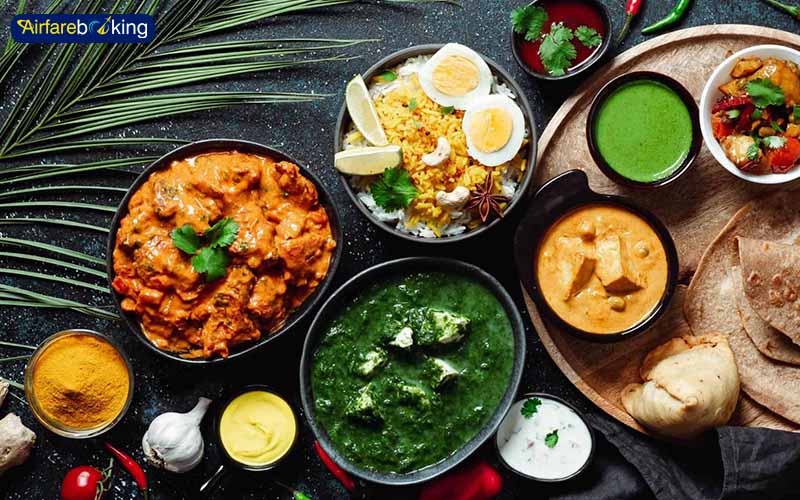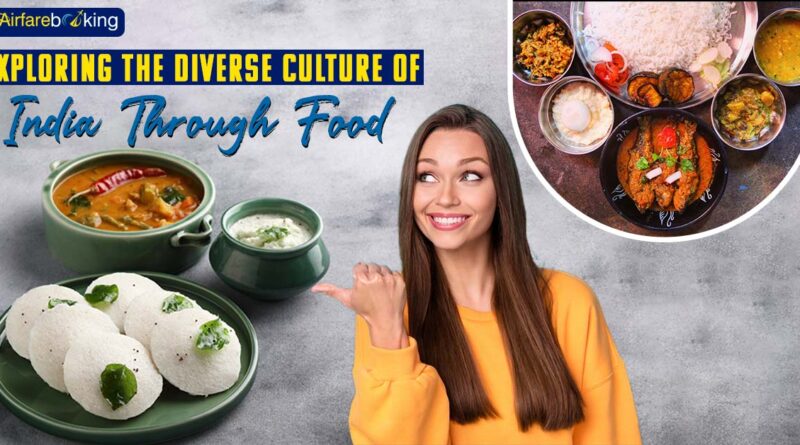Exploring the Diverse Culture of India Through Food
The variety of Indian food is well-known, and it differs according to each region, state, neighborhood, community, culture, and even religion. There are unfathomable varieties of food available. The skillful and subtle use of regionally grown fruits, vegetables, grains, spices, and other components sets it apart. The nation’s culinary culture has been impacted by all of its residents, including immigrants, who come from a variety of religious and cultural backgrounds.
The diverse cultures present in India is reflected in its cuisine. The phrase “Indian food” refers to a medley of tastes from various regions of the nation and reflects centuries of cultural interchange with other areas of the world. People from all over the world adore Indian cuisine because of its diversity. Millions of appetites and global cuisines have been transformed by the magnificent Indian food culture.
So, if you are also planning on buying international flights from Canada to India to experience Indian culture through food, check out our guide on exploring the diverse culture of India through food.
The Rich Heritage of Traditional Indian Food

Indian food is not like the food phenomena of other countries; it is an emotion, a tradition, and a shared legacy that has been kept for thousands of years. People revere and consider eating to be a blessing in their lives. Traditional Indian cuisine is one of the most vivid and aromatic food cultures in the world, making it the best illustration of the rich culinary heritage.
Indian cuisine is renowned for its variety, which comprises a wide range of species, cultural specialties, and regional dishes that offer remarkably healthy foods. The traditional food of India is not only very delicious but also incredibly healthy. It is a collective knowledge of ancestry that has been passed down through the centuries and can be considered proof of its genesis and preparation.
We ingest excessive amounts of chemicals due to the way we live today, which is bad for our health and contributes to a number of diseases. Due to our altered eating patterns and low-nutrient diets, we now spend more money on medications than on nutritious meals. Therefore, it is important to acknowledge and spread the nutritional benefits of traditional foods.
The Diverse Regions of Indian Food

India’s food is as diverse as its people. Indian cuisine distinguishes between north and south and east and west. Additionally, each region favors a particular style of food.
The majority of people believe that Indian food is spicy, which is true of the majority of Indian dishes but not all. Since ancient times, Indians have utilized a variety of spices in their cuisine, favoring them mostly for their flavor but also for their therapeutic properties.
Since a large portion of Indian cuisine is categorized according to its place of origin, we have created a very brief overview of those locations and the dishes or cooking techniques that they are famous for.
1. Punjabi
The Punjab state is situated in northern India. The Punjab region’s greatest contribution to Indian cuisine is the tandoori cooking style, which makes use of earthen ovens heated by coal. A traditional Punjabi lunch consists of daal, roti, yogurt, and meat or vegetables that have been curried. Punjabi cuisine typically uses spices including cumin, turmeric, mustard, garlic, and ginger. The Punjabi cuisines of Tandoori chicken, Butter chicken, and Aloo roti (bread loaded with potatoes) may be recognizable to you. Additionally, you can book cheap flight tickets from Canada to Amritsar through Airfarebooking.
2. Bengali
The region of Bengal, which is split between Bangladesh and the Indian state of West Bengal, is the source of Bengali cuisine. Bengali cuisine frequently uses the following spices: aniseed, cumin, black cumin, mustard, and fenugreek. Another hallmark of Bengali food is the use of mustard oil, which is unusual in other cuisines. Bengalis typically eat rice, seafood, eggs, daal, and vegetable curries. People all over India consume Bengali delicacies, which typically consist of milk or cottage cheese covered in gooey, sweet syrup.
3. Kashmiri
Kashmiri cuisine originates in Kashmir, a state in northern India, which both Pakistan and India divide. Frequent ingredients in Kashmiri cuisine include cardamom, cinnamon, and cloves, which are aromatic spices. Kashmiri cuisine is frequently fatty and made with ghee, a form of butter. People frequently serve lamb with rogan josh, and they prepare a meal with a sweet and creamy sauce called korma in Kashmiri cuisine.
4. Southern India
Kerala, Tamil Nadu, and other southern Indian states like Karnataka use a lot of coconut oil and spices in their cuisine. In the south, there are plenty of fish and coconuts as well as cardamom, black pepper, cinnamon, cloves, and nutmeg. People in southern states primarily eat rice, while those in northern cuisine widely utilize wheat. These southern Indian dishes are some that you might be familiar with fried Biryani and Dosa. So, book your online flight tickets from Canada to Coimbatore and explore the delicious cuisine of Southern India.
Explore the Richness of Indian Food and Culture
Once again, this is a very brief list of Indian regions and their food. There is an abundance of variety in Indian cuisine. We hope this article has piqued your interest in India, its mouthwatering food, and its interesting culture. However, there is still a tonne to learn.
To learn and find out more about Indian food and culture, book direct flights from Canada to India and visit a local Indian restaurant. Try to strike up a discussion with some of the employees while you are there. Ask them about the different Indian dishes and their cooking styles. Build connections with individuals so you can spread the gospel to others who have never heard it. Additionally, you can visit Tripbeam to grab the cheapest flight deals to India.
Also Read: India Introduces its First Biodiversity Museum in Kerela’s Boathouse
